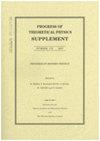Gelation and Glass Transition in Thermosetting Process of Epoxy Resin
引用次数: 3
Abstract
The curing process of thermosetting resins like an epoxy resin is characterized by gelation and vitrification (glass transition). We attempted to use time domain reflectometry method for dynamic observation of the curing process. From the result of measurements, a marked peak at a frequency of 50 MHz was observed in the power spectra, and as time passed this peak value increased. Furthermore, as temperature increased, this peak value curing time curve shifted to earlier time and a maximum value of the curve increased. From the comparison of the curves at each temperature with the times of glass transition, the shift of the curve to earlier time is smaller than the shifts of the time of glass transition. For the present, the origin of the peak at 50 MHz is not known. However, the peak at higher frequeJ;J.cy is likely due to the relaxation or vibration of short polymeric chains, and the increase of the peak value means that these short chains increased as the curing process proceeded. The formations of side chains and polymer networks seems to be the most probable, but the possibility of decomposition of harders still remain.环氧树脂热固性过程中的凝胶化和玻璃化转变
热固性树脂如环氧树脂的固化过程具有凝胶化和玻璃化(玻璃化转变)的特点。我们尝试用时域反射法对固化过程进行动态观察。从测量结果来看,在功率谱中观察到一个频率为50 MHz的显著峰值,随着时间的推移,该峰值增加。随着温度的升高,固化时间曲线的峰值向更早的时间偏移,曲线的最大值增大。从各温度下的曲线与玻璃化转变时间的比较可以看出,曲线向早期玻璃化转变时间的偏移小于玻璃化转变时间的偏移。目前,50兆赫峰值的来源尚不清楚。但高频处的峰值J;Cy可能是由于聚合物短链的弛豫或振动引起的,峰值的增加意味着这些短链随着固化过程的进行而增加。侧链和聚合物网络的形成似乎是最有可能的,但硬体分解的可能性仍然存在。
本文章由计算机程序翻译,如有差异,请以英文原文为准。
求助全文
约1分钟内获得全文
求助全文

 求助内容:
求助内容: 应助结果提醒方式:
应助结果提醒方式:


